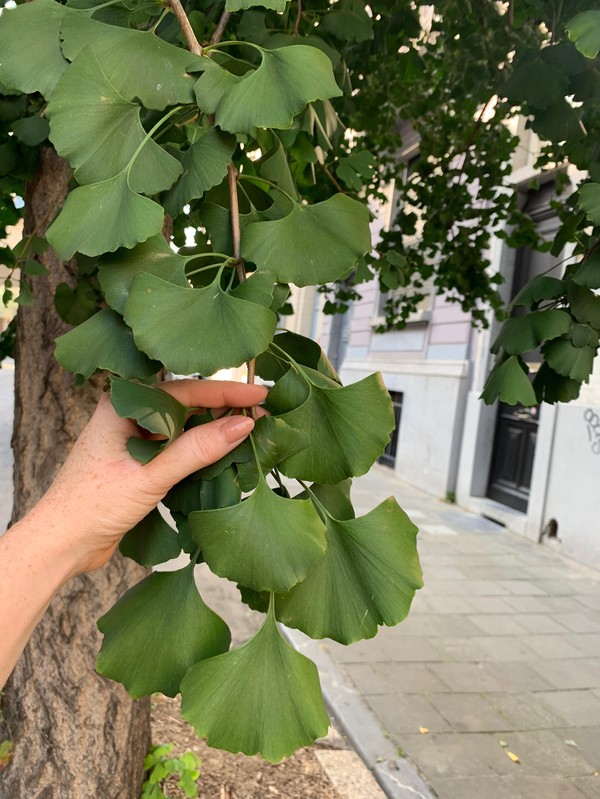Being Delighted: a living fossil
The ginkgo tree has basically looked the same for 270 million years. Take a moment to think about that. That's before mammals even existed, which makes it a living fossil. There's a street in Brussels lined by ginkgos. It happens to be the street where the Belgian architectur Victor Horta's former house is located. It's facade is majestic and characteristically art nouveau. I passed by yesterday, as I have many times, and I thought it's obvious that such a beautiful building should be surrounded by the noblest of trees, reminding us of our place as newborns in the long arch of history. Serendipitiously, ginkgo is a common motif in 20th century art noveau.
My love affair with the ginkgo did not start with its history. Instead it was an infatuation with the leaves themselves; their shape such an unlikely one, as if they were made more for the arts than for nature. Tiny green fans refreshing the trunk and branches, shaking densely in the breeze like bright green pom-poms. And in the fall they turn a saffron yellow so intense you're could be forgiven for forgetting they used to be green.
I spent a few days in Washington D.C for a course last year. Every morning I'd walk from one side of Dupont Circle to another, and I stumbled upon this lovely DC street where the ginkgos had just started to shed their leaves. Every morning I would pick up a few yellow ones and slide them into a book, or two, that I was carrying. As I flew back across the Atlantic after a month in the US, those saffron leaves, neatly tucked in between pages of text, came with me. Every now and then, I slip one of the dried fan-shaped talismans into a book I will one day open and be delighted all over again.

Kommentarer
Trackback
